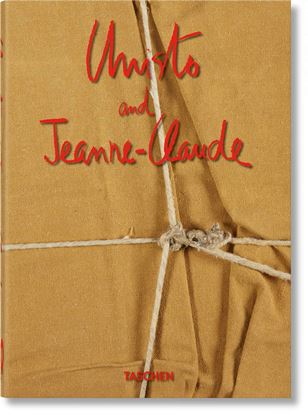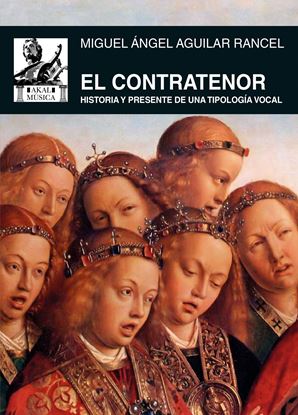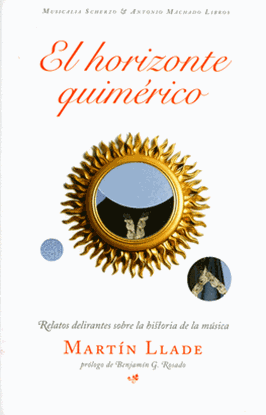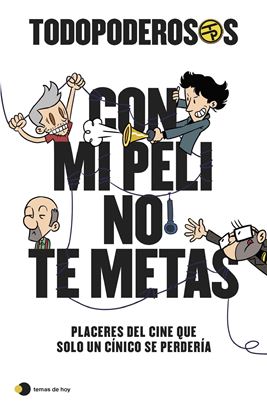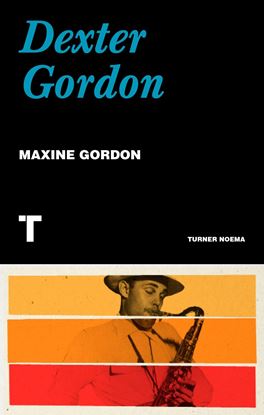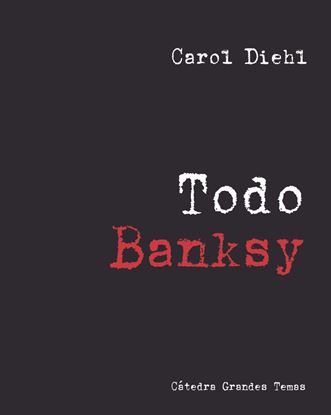

CHRISTO & JEANNE-CLAUDE (40) (INT)
The works of Christo and Jeanne-Claude are monuments of transience. Gigantic in scale, they are always temporary, created to exist only for a limited time and to leave unique, unrepeatable impressions. “From the smallest of the Packages made in Paris in the early 1960s, to the delicate pattern of hundreds of branches embraced by a translucent fabric veil... in Christo and Jeanne-Claude’s works there is nothing abstract, nothing imagined; it is all there―corporeal and tangible.” (Lorenza Giovanelli)
1,500
1,200
EL CONTRATENOR (OF2)
De ser prácticamente unos cantantes marginales y vistos con desdén hace no más de 30 años, los contratenores han pasado a convertirse en auténticas estrellas seguidas con fervor por el público. Sin duda, su creciente protagonismo en el repertorio barroco ha tenido mucho que ver en esta popularidad, pero ni mucho menos se limita a él, puesto que también desempeñan un papel destacado en la creación más estrictamente contemporánea.
Su emisión prioritaria en Mecanismo 2 en ámbito de alto o mezzo desafió las expectativas de la inmensa mayoría de las audiencias clásicas. Y en su valoración no ayudó mucho el que, desde tiempos pretéritos, se aplicase a su fonación el insidioso término de falsete, con lo que conllevaba de sugerir falsedad o artificiosidad.
Partiendo del establecimiento de los cuatro patrones mecánicos de fonación, el autor aborda la figura del contratenor con un carácter global: su historia, su correcta clasificación, su técnica vocal, su presencia en la interpretación históricamente informada … En suma, El contratenor, estudio sólido y exhaustivo, es la reivindicación de una voz determinante que, desde que llegó, se ha convertido en un imprescindible de la práctica musical de nuestros días.
500
400
EL HORIZONTE QUIMERICO (OF2)
¿Sabía usted que Chopin nunca existió y que era una invención de George Sand ¿Que Sibelius escribió siempre la misma obra y nadie se dio cuenta ¿Que Stravinski formó un grupo pop para competir con The Beatles ¿Que Albéniz fue el jefe de una banda de forajidos en México a los diez años y que Satie ocultaba un Aleph dentro de uno de sus pianos ¿Y que Haydn realizaba viajes astrales Por las páginas de El horizonte quimérico desfilan un Mozart de cincuenta años, un Beethoven con el oído recobrado, autómatas inteligentes, compositores más poderosos que el Rey Sol y vampiros sedientos de música. Una reformulación del concepto de ucronía con guiños a Borges, Marcel Schwob y el realismo mágico que, sin duda, hará las delicias de los melómanos y de los amantes de las lecturas con una sonrisa en los labios.
500
400
TODOPODEROSOS: CON MI PELI NO TE METAS
Cine y humor de la mano del podcast cultural con la comunidad más sólida de España.
El primer libro de Todopoderosos.
Todos tenemos películas supuestamente malas que no podemos dejar de ver una y otra vez. Cintas denostadas por público y crítica que, por diversos motivos, se nos han quedado pegadas, se han ganado un lugar en nuestro corazón.
Armados de argumentos, referencias y sentido del humor, Juan Gómez- Jurado, Rodrigo Cortés, Javier Cansado y Arturo González-Campos defienden en este libro este tipo de películas. A través de joyas desconocidas, placeres culpables, obras nostálgicas y bodrios divertidísimos, nos invitan a reconectar con el cine más allá de puntuaciones y tendencias efímeras para vivirlo como lo que es: una experiencia intelectual pero, sobre todo, emocional.
900
720
DEXTER GORDON (OF2)
Dexter Gordon es una presentación de la vida y el legado del legendario jazzista, maestro del saxofón tenor y un gran innovador del jazz moderno. Combinando biografía, historia, y memoria, Maxine Gordon cumple la promesa hecha a su esposo de completar y publicar la obra que Dexter había empezado. Como en una composición de jazz, el libro mezcla temas, anécdotas, y selecciones personales que reflejan su vida colorida y la gran época del bebop, hasta la nominación al Óscar como mejor actor por su papel en la aclamada película de Bertrand Tavernier Round Midnight.
500
400
TODO BANKSY
Banksy es el artista vivo más famoso del mundo, pero nadie conoce su identidad. Durante más de veinte años, sus pinturas irónicamente políticas y de humor negro han aparecido misteriosamente en las paredes urbanas de todo el mundo generando titulares y controversia. Los críticos de arte lo desprecian, pero el público (y el mercado del arte) lo aman. Con este libro, generosamente ilustrado, la artista y crítica Carol Diehl es la primera autora en sondear las profundidades del misterio de Banksy. A través de la exploración de sus pinturas, instalaciones, escritos y la película "Exit Through the Gift Shop (Pase por la tienda de recuerdos antes de salir)", nominada a los Oscar a la mejor película documental, Diehl demuestra inequívocamente que Banksy es más que pintura en la pared.
1,700
1,360


